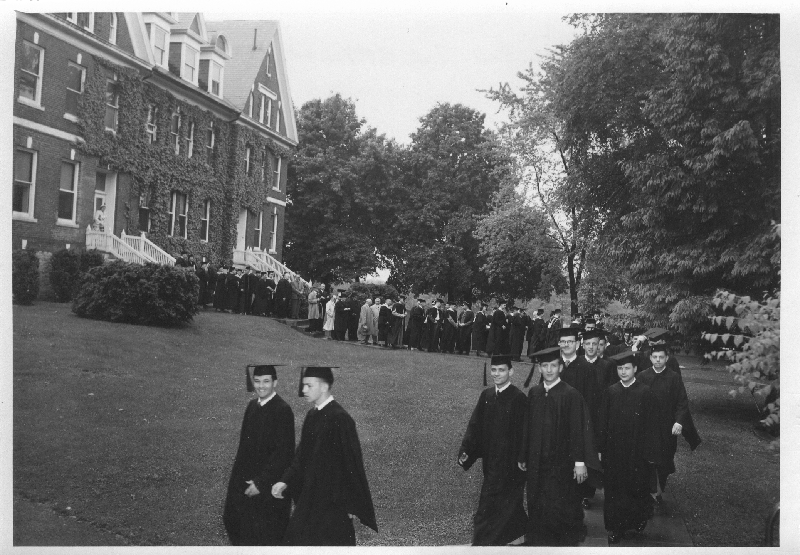From now until the end of the semester, the Collage Gallery on the second floor of the Baugher Student Center will feature Then and Now, a photography exhibit spanning 115 years of student life on the Elizabethtown College campus.
Dr. Jean Paul Benowitz, director of student transition programs and assistant director of Academic Advising, conceived the idea for the exhibit in the wake of the publication of a recent book, Elizabethtown College, a chronicle of the College’s history coauthored with High Library Reference Librarian and Archivist Peter DePuydt. DePuydt collected photographs from the Library archival collection, and Benowitz drafted accompaniments of historical context.
According the authors, the book’s publication produced several major outcomes: an increased interest in College history and alumni relations; a greater volume of alumni submissions of archival photography; and the formation of a new project spearheaded by Benowitz and Provost Susan Traverso titled “Elizabethtown College: Artifacts, Images and Stories Collection.” This effort focuses on collecting, processing, and sharing the personal artifacts, images, stories and traditions of E-town alumni, and one of their first illustrations of this tireless historical work is reflected in the Then and Now exhibit.
“I tried to find images of as many components of student life as I could,” Benowitz said, describing the collection process for Then and Now. The exhibit as a whole, he said, is about “building a sense of community – studying together, living together, growing together.” He says the exhibit illustrates student activities, community involvement, and traditions which “have always been a part of the campus community.”
[The exhibit … is about] building a sense of community – studying together, living together, growing together.”
Installed in late July in time for new student summer orientation, Then and Now is composed of dozens of archival photographs of all areas of student life on campus, including construction of campus buildings and landscaping, clubs and organizations, athletics, social events, the performing arts and more.
One of the most prominent aesthetic elements of the exhibit is its carefully assembled layout, which cleverly places photographs of student life Then in juxtaposition with life Now. One photograph dating back to 1901 features students planting the 200 maple trees that still comprise the grove north of Alpha Hall. Opposite this photograph is one of current E-town students planting trees as part of a service learning trip for the Appalachian Trail Conservatory. Another example of this juxtaposition can be seen in a photograph of 1970s students participating in an Earth Day activity, contrasted with an image of 2013 Momentum students flying kites in the Dell. These images, Benowitz said, were chosen to illustrate that E-town has “always been very mindful of the environment and social justice.” He cited the idea of the campus being “built by the students” and the College’s emphasis on student “stewardship.”
Other notable archival photographs in the exhibit include that of E-town’s first and only football team, the Brutal Thirteen, formed in 1927. The team lost every game and existed for just one academic year. Another photograph features the graduation of the Class of 1952, whose gift to the College was the decorative archway that still stands near the Schlosser dormitory. Still another depicts student activities during a 1950s May Day celebration, the campus holiday initially founded by Vera Hackman that is now fondly referred to as Thank God It’s Spring (TGIS).
Particular emphasis, Benowitz stated, was placed on student diversity – race, gender, and background – in the photographs selected for the exhibit. Differences in campus population between the Then and Now images was a specific area of interest in the assembly of the collection, something of which Benowitz hopes viewers will take notice.
“As a historian,” he said, “context is important to me. What will be my legacy? What will be your legacy? How can we continue to grow the College?”
Then and Now is a rotating exhibit and will be displayed periodically throughout the year between exhibits of student and faculty artwork.



